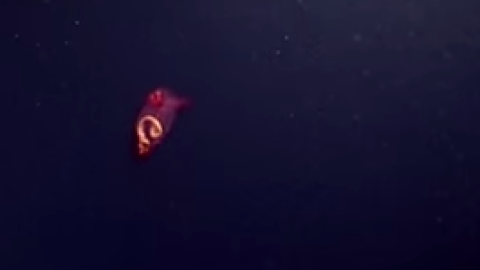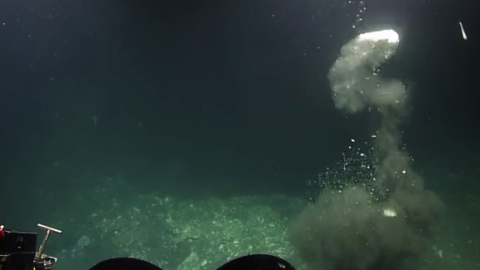Why Do Bubbles Matter?
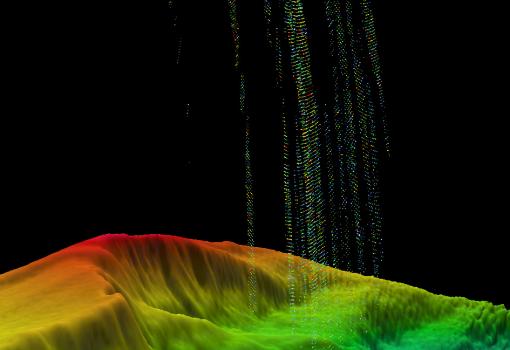
Can bubbles be used for anything other than relaxing baths and children's birthday parties? The GISR (Gulf Integrated Spill Response) Science team thinks that watching bubbles can help to predict how the natural microbiology of the ocean consumes petroleum fluids and possibly mitigate the effects of a future spill. This is our second year on GISR. In our experiments last year, we were able to get baseline understanding of the gas flux at the sea floor as well as the size distribution of the bubbles exiting the seep using multibeam sonar and stereoscopic cameras. This year we hope to go even further into this research to provide field measurements for the development of predictive models for the physical movement of hydrocarbons in the ocean.
How Do We Research Bubbles?
We have a diverse team of scientists and instruments aboard Nautilus for this year's GISR cruise. In addition to the multibeam sonar and stereoscopic cameras used last year, we have incorporated new acoustic imaging equipment that will allow for us to see more of the bubble plume at once and make it easier to track bubbles farther into the water column. This equipment will release accoustic pulses which will reverberate off the methane bubbles (similiar to ringing a bell). Sound waves move differently through gases and water, therefore measuring the speed at which these waves travel can tell us more about the composition and structure of the bubbles than we could using cameras alone. This acoustic imaging will provide us with a much wider region of viewing methane seeps and could potentially remove the need for ROV research of seeps altogether.
Also on the ship this year, we have added a new cold van to store and test water samples taken from the plumes. This will be the first time samples will be taken from depth and tested on board. Hercules will extract mesocosms (samples of the environment taken at various depths in the water column). These samples will be incubated inside the cold van which has been controlled to match the conditions from where the samples were taken. The chemosynthetic bacteria found at the seep prefer to consume "lighter" isotopes of carbon. By monitoring the ratio of carbon 12 to carbon 13 isotopes we should get a chance to see the rate at which methane is consumed at the seep site and throughout the water column.
How Do you Find a Bubble at the Bottom of the Ocean?
If you think finding a 2 milimeter bubble at the bottom of the ocean is hard, then yes, you are correct. The bubbles we are studying range in size from 2-10 mm and disperse as they ascend through the water. Even though there are possibly thousands of seeps in the Gulf of Mexico alone, finding individual bubble plumes and tracking the movement of individual bubbles involves an intricate dance between our ROV's in the water, sonar equipment, and sometime pure guess work. Locating plumes would have been nearly impossible without the use of our multi-beam M3 sonar hooked to the front-end of Hercules. The M3 sends out a horizontal fan of sonar which scans a thin layer of the water column for traces of bubbles. Once a plume is found, we drop Hercules and examine the source of the bubbles. Using 2 stereoscopic cameras positioned like two giant "eyes" on the front of Hercules, we are able to determine the size of the bubbles and track their ascent in slow motion.
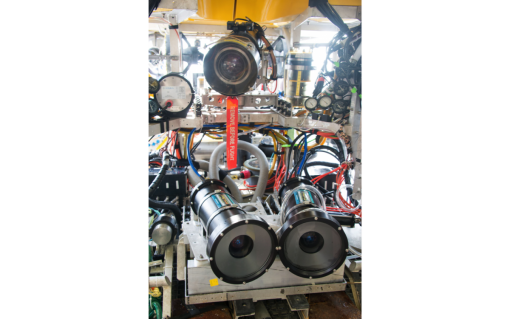
But Why Bubbles?
Before the Deepwater Horizon Oil Spill in 2010, little was known about how microbes in the ocean transform released petroleum fluids. We understood that chemosynthetic bacteria are able to "consume" methane from cold seeps, but big questions still existed about the rate at which this occurs and if ocean microbiology was able to handle a spill of the magnitude of the Deepwater Horizon spill. Research conducted aboard Nautilus by scientists from Temple University indicates that the dispersant used following the Deepwater Horizon spill in 2010 was as toxic to coldwater corrals as the oil itself. Understanding how the interaction between hydrocarbons released at natural seeps and the microbiology found there could provide some insight for the use of dispersants in future spills. Also, methane is a known greenhouse gas and a major player in global warming when released into the atmosphere. Through previous GISR cruises we began to realize that there is much more methane below the surface that we had ever imagined. We have a rough estimate of the amount of gas escaping the ocean floor through seeps. This year, we hope to determine how much of that methane is being consumed and how much is reaching the atmosphere. Understanding these quantities is important to making predictions about future climate conditions.
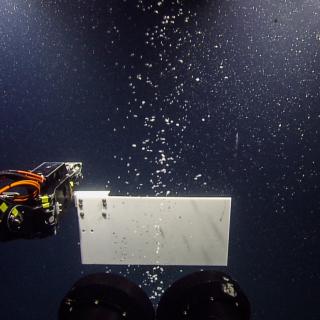
GISR: Natural Gas Seeps in Gulf of Mexico
What impact do natural hydrocarbon seeps have on the ocean and atmosphere? This is one of the key questions we’ll be investigating on this leg of the expedition. This expedition is part of the Gulf Integrated Spill Response (GISR) Consortium, funded by the Gulf of Mexico Research Initiative (GoMRI). The vision of the GISR Consortium is to understand and predict the fundamental behavior of petroleum fluids in the ocean environment.

